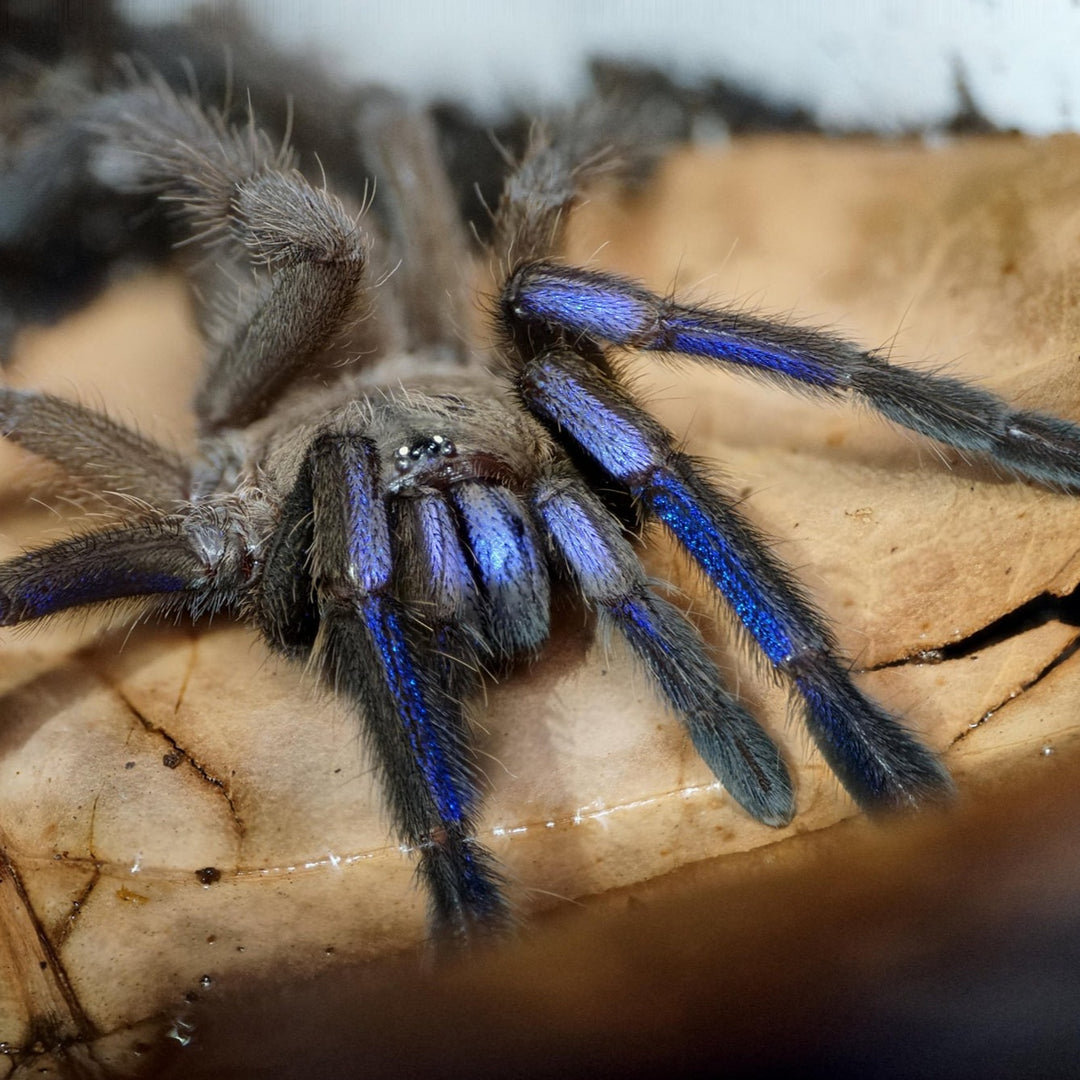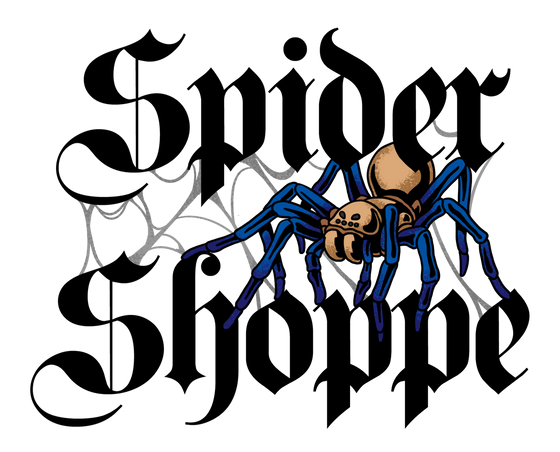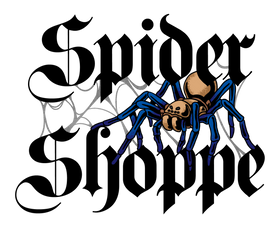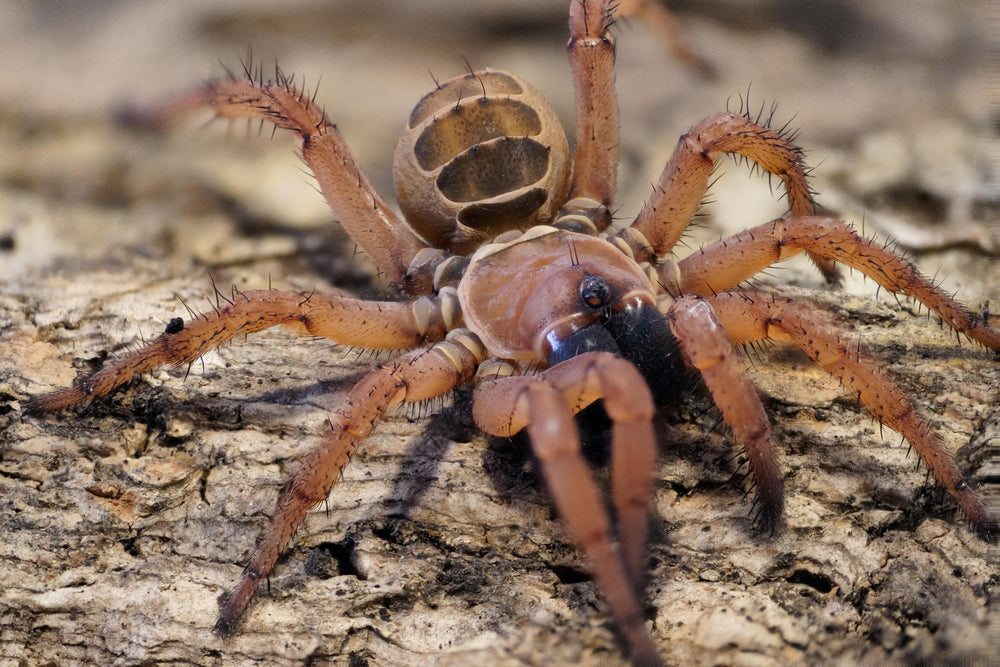
Chilobrachys natanicharum (Electric Blue Earth Tiger) 0.75" | 3" | 5" FEMALES
- Live Arrival Guarantee
- Live Animals Ship FedEx Priority Overnight (Mon-Weds)
- In stock, ready to ship
- Inventory on the way
For this spider, the party's all upfront- and it’s a party you do not want to miss. Despite being in the hobby for several years as Chilobrachys sp. “Electric Blue,” Chilobrachys natanicharum (Chomphuphuang et al.) was only described formally in 2023 and is a wildly beautiful, absolute unit of a tarantula. These flashy members of the subfamily Selenocosmiinae were scientifically described as sporting a “blue-violet hue resembling the color of electrical sparks.” They reside within 5 meters of sea level in tree hollows of steamy coastal mangrove forests of southwestern Thailand.
C. natanicharum is found within 5 meters of sea level in mangrove forests. They colonize mangrove tree hollows. Spiderlings and juveniles typically construct funnel sheet webs in hollows. Adults web up interiors of tree hollows as well, waiting at the mouth of tree cavities for passing prey at night. While spiderlings begin life resembling many other members of Selenocosmiinae, mostly dark in coloration, their transformation into a technicolor beast becomes more apparent with each molt. Over time, the abdomen and two posterior (hind) pairs of legs remain a drab mousy gray in coloration as the carapace takes on champagne to silver tones. However, the chelicerae and interior surfaces of the anterior (front-facing) two pairs of legs progressively become more metallic silver, purple, royal blue and electric sky blue with each molt toward adulthood. If you view them with a headlamp, you will notice how the metallic colors drastically change with every slight shift in angle of every leg or chelicerae segment as they race through their elaborate silk-lined tunnels.
Chilobrachys are tough and hardy Old World tarantulas with a rapid growth pace and one gluttonous appetite. They probably would try to take down a moose if you let them- so don’t! While not quite that ambitious, C. natanicharum has no qualms tackling prey their size or larger. Be warned: these tarantulas sometimes even impale their prey like purseweb spiders by puncturing straight through the silk walls or floors of their tunnels with their hefty chelicerae. Watching these tarantulas in action is probably not far from a low budget horror film playing somewhere on mute in the middle of a rave or goth club.
As a member of Selenocosmiinae, C. natanicharum is equipped with long spinnerets, and webs copiously throughout any open space in its enclosure. Being facultative arboreals in nature, a vertical setup with cross ventilation, plenty of substrate, Magnolia leaves, cork bark, etc. works well for C. natanicharum. These spiders can attain an impressive leg span of 7 inches (~17cm) and despite being leggy, mature females become surprisingly robust.
Maintain a humid enclosure with somewhat moist substrate for spiderlings through adulthood. This and other Chilobrachys species are tough tarantulas and tolerate drier substrates as they attain size. However, it is good practice to ensure at least one side or corner of the enclosure is periodically misted to provide some soil moisture and humidity. Typically, if part of the substrate on a side of the cage is kept moist (not wet) from occasional targeted mistings, the spider should be alright and locate its ambient zone somewhere along the moisture gradient in its enclosure. A water dish is also beneficial for larger specimens.
Similarly to other genera within Selenocosmiinae, C. natanicharum is an elegant, leggy tarantula with a bullet-shaped carapace and elongate abdomen, making them lightning fast and agile. Since members of this tarantula subfamily have rather strong venom and C. natanicharum are highly defensive with a bold feeding response, these spiders should not be handled and care must be taken to locate the spider’s position before opening the enclosure. It is not uncommon for C. natanicharum to rush toward your hand as you open the enclosure, so watch your fingers when working with their enclosures. Best enjoyed like insanely cool tropical fish with fangs. If you are a color junkie that likes Old World tarantulas, you will not regret getting this ridiculously beautiful species.

Info on our shipping policy can be found on our T&C page.



